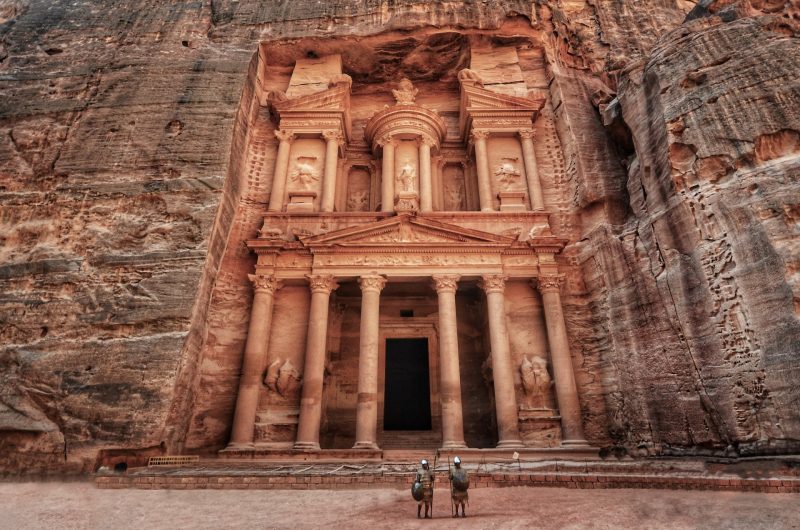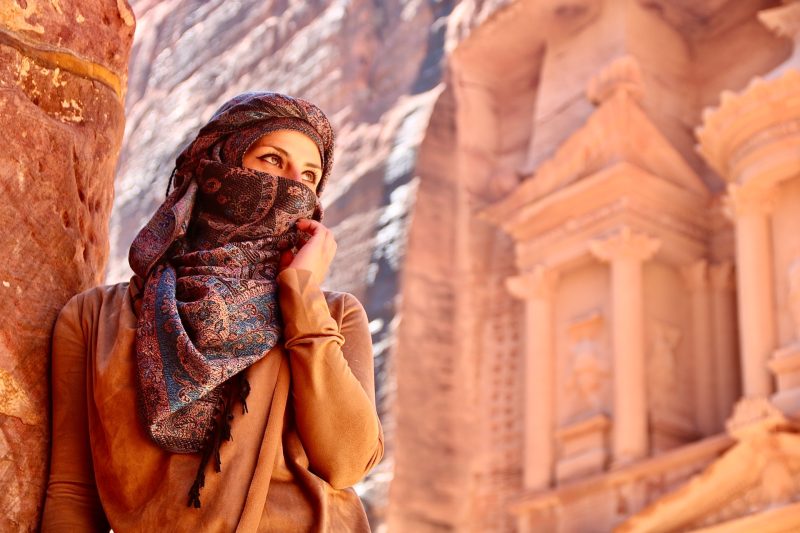A treasured Jordanian attraction has a somewhat misleading name
IAN STALKER
One of the world’s great archeological structures appears to have been given the wrong moniker.
Petra, Jordan’s The Treasury — routinely used in Jordanian tourism promotions and which appeared in the blockbuster movie Indiana Jones and The Final Crusade — doesn’t appear to have been a treasury at all, but instead likely served as a tomb for a Nabatean royal figure.
“That’s the wrong name. If it’s a treasury it’s because of your tickets (bought to enter popular Petra),” Jordanian tour guide Michel Safar recently told a group of visiting Goway Travel staff.
The structure received its name because area residents long ago mistakenly thought that the urns found atop towering Treasury columns contained treasure, leading to its current name.
The Treasury is the dominant feature of UNESCO World Heritage Site Petra, having been skillfully carved from a rockface perhaps around 2,000 years ago, with Safar saying the project may have taken as long as 40 years.

The archeological marvel reaches around 40 meters in height.
Petra — frequently dubbed the Rose City because of the colour of stone in the area and which was also declared one of the Seven New Wonders of the Ancient World — was once an important stop on trading routes, became part of the Roman Empire and was influenced by other ancient civilizations but eventually faded in importance and was then forgotten to the outside world until an early 19th-century Swiss explorer on his way to visit archeological sites in Egypt was directed to the one-time flourishing Nabatean city by a local and then brought word of it to the rest of the world.
Tourists now reach the site through the Siq — a narrow gorge flanked by towering rock walls that ends in front of The Treasury. (Those who don’t think they’re up to walking the lengthy Siq can pay a fee to take a golf cart.)
Although Petra is commonly associated with The Treasury, Safar notes that it’s actually a sprawling site, containing many other features, including a Romanesque-like theater, and numerous other tombs. Another highlight is the imposing Monastery, which resembles The Treasury somewhat and which is reached by a lengthy upwards hike that features a large number of steps carved from stone.

Safar says much of Petra hasn’t yet been excavated.
Meanwhile, Petra can attract large numbers of visitors, and Safar suggests that those who don’t like crowds arrive very early.
The Petra by Night show is held several times a week and sees the area immediately before The Treasury dramatically illuminated by hundreds of candles and has narration telling of Petra’s history but Safa cautions that those who want to enjoy that view in a quiet manner again arrive early as onlookers frequently talk to each other.
Among the many hotels in the bordering town of Wadi Musa (which is frequently referred to as Petra) are The Petra Guest House, a four-star hotel, and an upscale Movenpick property, which is part of the Swiss hotel chain. Both are found close to the entrance of the archeological site.
Among tour operators that send people to Petra and other parts of Jordan is Goway Travel, which will customize itineraries.

















